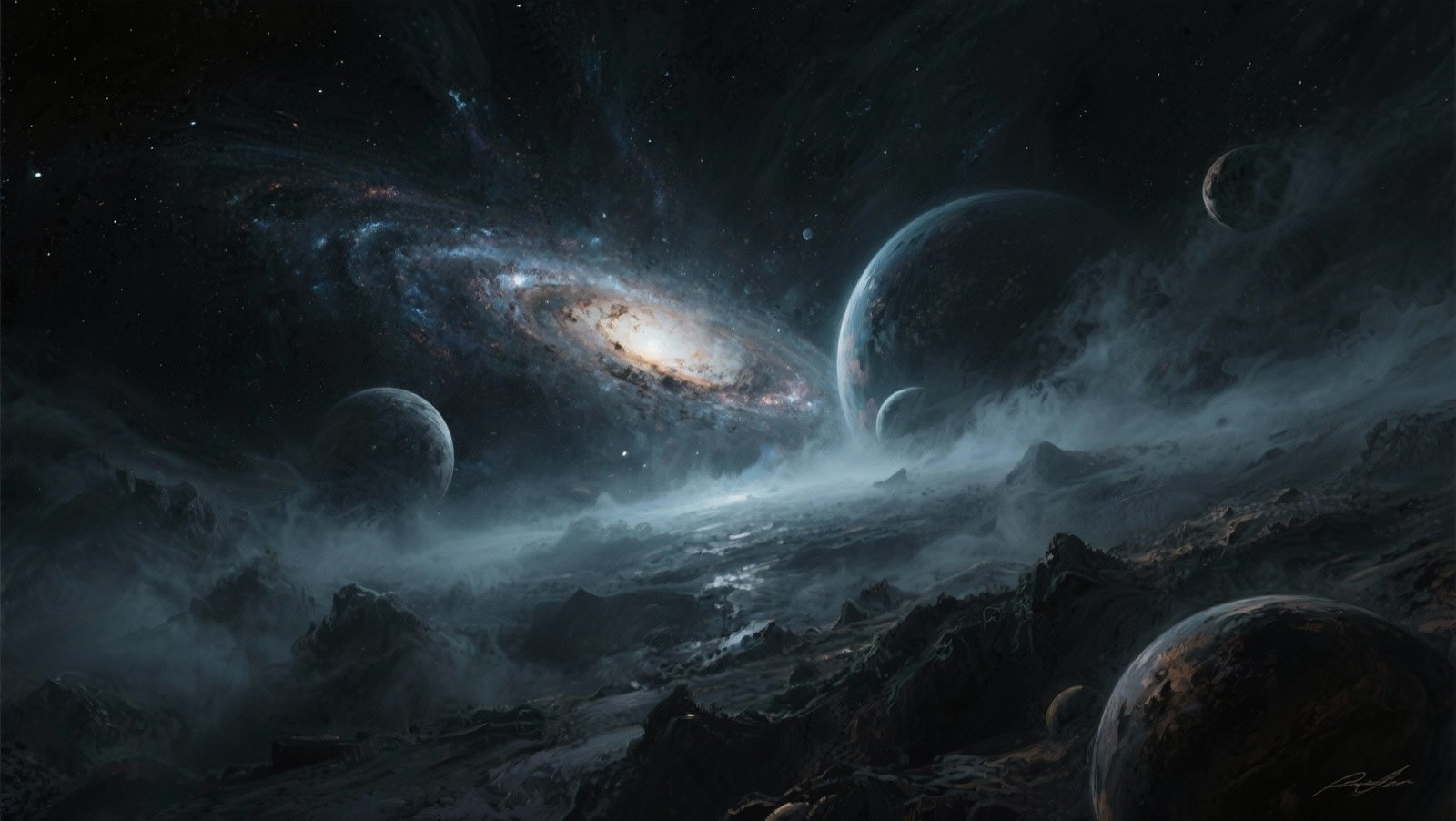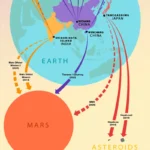When you step outside at night and stare into the sky, you might wonder —
“With billions of stars out there, why is space still dark?”
If the universe is full of light, shouldn’t the night sky be glowing like a sea of diamonds?
This simple question has puzzled astronomers for centuries — and the answer reveals something extraordinary about the nature of our cosmos.
Why Earth Shines, But Space Stays Dark
Here on Earth, our skies come alive in color — painted blue in the day, crimson at dusk, and gold at dawn. The secret lies in the air we breathe.
When sunlight enters Earth’s atmosphere, it collides with countless molecules of gas and tiny particles of dust. The shorter, blue wavelengths scatter in all directions, flooding the sky with light. This is called Rayleigh scattering, and it’s why we never see a black sky on Earth while the Sun shines.
But step beyond our atmosphere — into the void — and everything changes.
No air. No dust. No scattering.
That’s why, even when the Sun blazes over the Moon’s surface, its sky remains pitch black. Light travels straight — untouched — and without an atmosphere, the cosmos reveals its true, silent darkness.
Olbers’ Paradox: The Question That Changed Cosmology
Back in the 1800s, a German astronomer named Heinrich Wilhelm Olbers asked a question so bold it shook the science of his time:
“If the universe is infinite and filled with stars, why isn’t the night sky as bright as the Sun?”
In theory, every direction we look should end on the surface of a star. And if stars are scattered across an endless universe, their combined glow should fill the sky with blinding light.
Yet we see darkness.
This contradiction, known as Olbers’ Paradox, became one of astronomy’s greatest puzzles — forcing scientists to rethink what they knew about the universe.

A Living Universe — Not Eternal, But Expanding
Modern cosmology finally cracked the code. The key? The universe isn’t infinite or eternal — it’s young and growing.
Our cosmos was born about 13.8 billion years ago in the Big Bang, and it’s been expanding ever since. That means much of the starlight from faraway galaxies hasn’t reached us yet. The universe is simply too vast and too young for all its light to fill the sky.
Even more fascinating — as space stretches, the light from distant galaxies is redshifted beyond visible wavelengths, fading into the infrared and microwave spectrum.
So, when you see darkness, you’re not seeing emptiness — you’re seeing the limits of light.

Space Isn’t Empty — It’s Just Beyond Our Eyes
Though it looks black to us, space is anything but dark.
Telescopes like Hubble and James Webb reveal a hidden symphony of light — glowing clouds of gas, ancient galaxies, and background radiation that whispers of creation itself.
Our eyes see only a tiny sliver of the spectrum. Beyond it, the universe glows with colors, heat, and energy we cannot perceive. The dark isn’t the absence of light — it’s a veil drawn by our own limitations.
In truth, the universe is alive with light, we just haven’t caught up to all of it yet.











